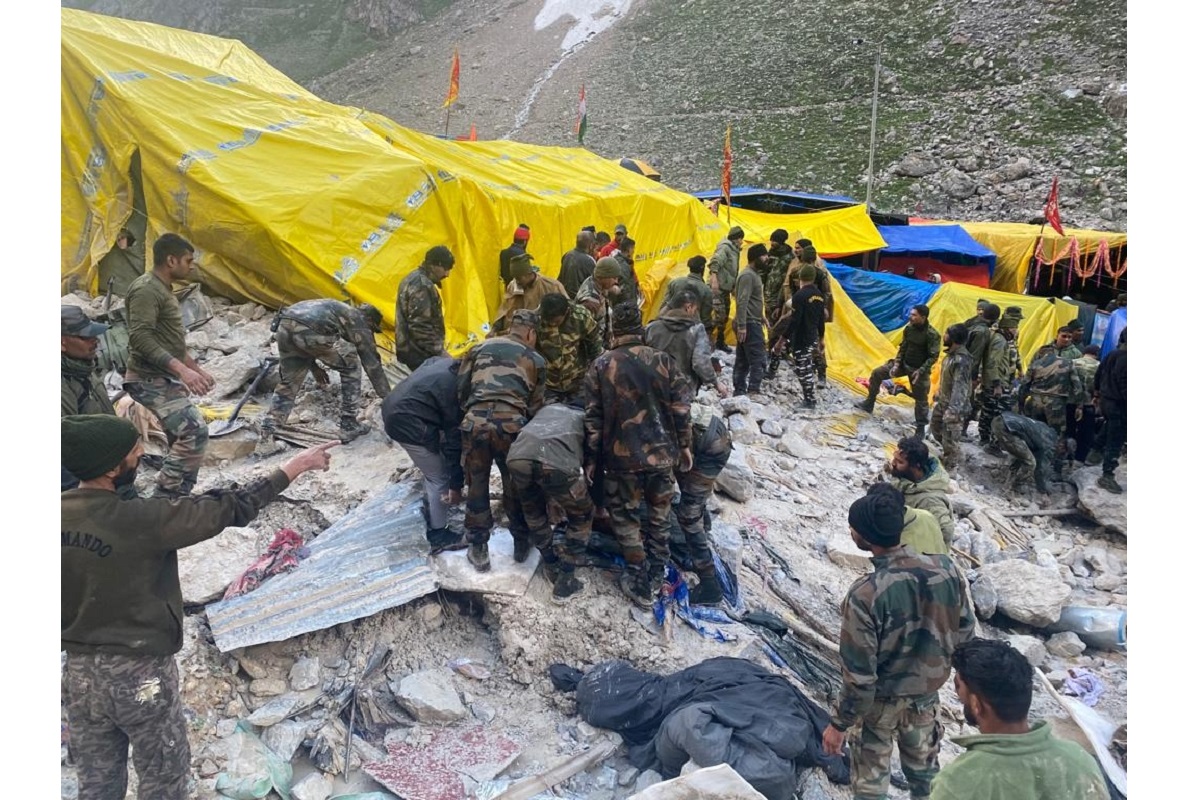The Indian Army has made multi-tiered security arrangements and established helipads at multiple locations of the Amarnath pilgrimage routes for medical emergencies and to cater to other air-lift requirements.
Northern Army Commander Lt. General Upendra Dwivedi on Monday reviewed the ongoing preparations for the Amarnath Yatra that will commence on 1 July for a duration of two months.
Advertisement
The Yatra takes place annually via two routes i.e. Southern route, through Baltal in Ganderbal, and the Northern Route, through Pahalgam in the Anantnag district.
The Army Commander inspected the arrangements along both the routes and was briefed on the multi-tiered security arrangements to include night domination through night vision devices, snipers, drone systems, bomb disposal squads, dog squads, counter IED equipment, vehicle repair and recovery teams to ensure smooth movement of convoys and synergy with the civil agencies being under taken to make the Yatra incident free.
He was also shown the arrangements made by the Border Road Organisation (BRO), the Indian Air Force and teams from High Altitude Warfare School.
According to Army officials, the road stretch to the holy cave shrine is almost clear for induction of pilgrims. In coordination with Civil Administration, NGOs and other agencies, Army is establishing multiple medical detachments with special arrangements of Oxygen cylinders and control rooms at various places along both the routes for humanitarian aid that will be operational round the clock. Various civil aviation agencies have been incorporated for providing air travel facilities to the devotees.
The Army has established Helipads at multiple locations for medical emergencies and to cater for other air lift requirements. Army has also established a number of Yatri camps with adequate tentage facility along with special winter clothing arrangements to provide habitat and comfort during the Holy Yatra.
Based on the experiences of the Cloud Burst during the Amarnath Yatra 2022, civil rescue teams and avalanche rescue teams will also be deployed enroute systematically to mitigate any kind of disaster. Earth movers will also be placed at multiple locations enroute for emergencies. Seamless communication network on both the routes has also been operationalised. SFF detachments will also be overlooking the security of the people.
An “All-Inclusive Approach” has been followed to synergize the efforts with all civil agencies including joint training, joint operation, joint exercises and mock drills are being conducted to ensure seamless and successful conduct of the Yatra this year, said the defence spokesman.
Northern Army commander appreciated the good work of all agencies and the synergy between them. He complimented them for their proactive action and exhorted them to meet the future challenges.
Meanwhile, Lieutenant Governor Manoj Sinha held a high-level meeting in Srinagar to take stock of the preparedness of departments and concerned agencies for the Yatra.
The meeting was attended by Shaleen Kabra, Principal Secretary, Jal Shakti Department; Dr Mandeep Kumar Bhandari, CEO, Shri Amarnathji Shrine Board; Lt General Rajiv Ghai, GOC 15 Corps; Vijay Kumar Bidhuri, Divisional Commissioner Kashmir, senior officials of SASB, BRO and representatives of telecommunication service providers.
The Lt Governor took appraisal of the upgradation work of Yatra tracks by BRO; installation of safety railings on all vulnerable stretches; snow clearance; installation of Army Tents and strengthening of Telecommunication connectivity.
He directed the telecom service providers to enhance the network connectivity and increase the bandwidth along the yatra route.
The Lt Governor also took stock of the works taken up by the Irrigation and Flood Control department.
He directed for higher resource mobilization and increasing the manpower to ensure the completion of all related works well before the commencement of the yatra.











